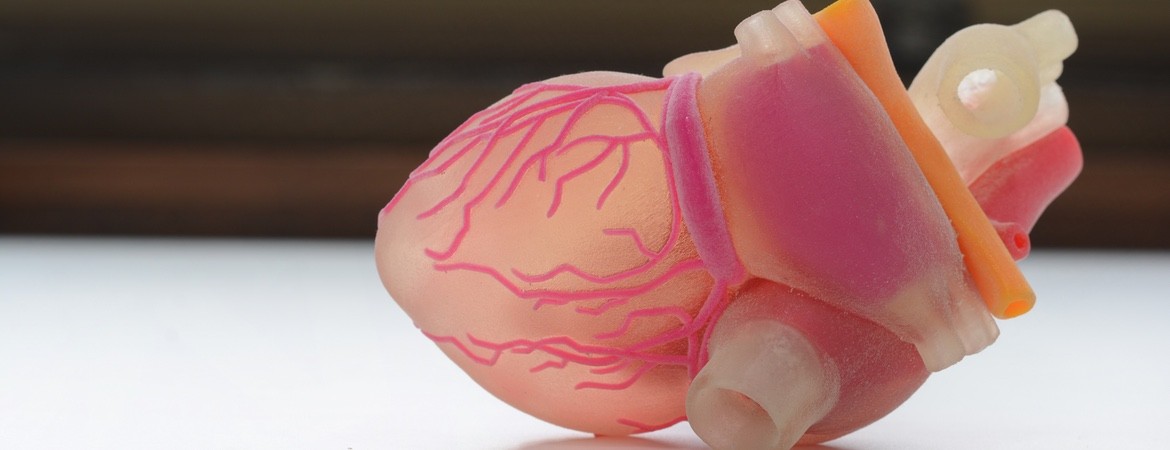Beyond the Hype - Is 3D Printing Ready for Primetime?
By Nicolas White, Informa Life Sciences Exhibitions, Dubai, UAE , 16 March 2017
Three dimensional medical printing is widely seen as being the next big thing, not only in healthcare but in a wide variety of industries. The Dubai government has placed a great deal of emphasis on the technology in its future plans from construction, to manufacturing and - of course - healthcare. The technology was front and center at this year’s Arab Health exhibition with a 3D printing conference track as well as a 3D printing zone highlighting the potential of the technology in healthcare. Does 3D medical printing, as the technology currently stands, live up to the hype it generates? While 3D medical printing is bursting with potential, in its current form, it could be described as a niche technology with limited yet still important contributions.
The vast majority of the contributions 3D printing adds to healthcare at the moment come in the surgical field. Dr Mohammad Al Redha, Director of the Executive Office for Organisational Transformation at the DHA explains that a key benefit of 3D printing “lies within its ability to print finely detailed items.” That detail the technology brings to the table enables surgeons to plan surgeries on extremely accurate models that are based on patient specific scans. Indeed, Dr Al Redha cites a recent surgery in Dubai where the surgeon ordered a 3D printed kidney model “was an exact copy of what the patient had in her body.”It is, says Dr Al Redha, the fine detail that is possible in 3D printing that sets it apart as a technology, arguing that other than truly gifted sculptors, nothing can approach the level of detail that can be programmed into a 3D printer.
Michael Gaisford, director of marketing, medical solutions at STRATASYS explains that while 3D printing debuted as a means of creating one-off rapid prototypes, “doctors realized that if you can print a new one of a kind device, why can’t you 3d print patient anatomy.”A realization that ushered in the era of 3D printed surgical planning and brought the technology to the fore in healthcare whereas it had previously been used in more industrial roles.
Henry Pinchbeck, Founder and CEO of 3D Life Prints explains that surgical simulation and planning are 3D printing’s bread and butter. He cites the fact that 90% of what his company does comes from patient specific scans where, for example, a CT scan of a patient’s heart is taken in order to “print a model of it with all the internal and external detail.”As such, if a surgeon has concerns or wants some reassurance, before a surgery, an accurate model can be made for that specific surgery in order to aid in the planning. “It gives a whole avenue to explore before the surgery as, no matter what scans can tell you, theres still a lot of unknowns before a surgeon opens up a patient. He continues, saying that he has heard from a number of surgeons that they can often spend fifteen to twenty minutes thinking and planning how to proceed after having opened the patient in the operating theatre. Giving surgeons the ability to plan their interventions in advance cuts that time down a great deal, allowing for much more efficient use of operating theatre time as well as the surgeons time and consumables such as blood that all go into a successful surgery. Pinchbeck cites reports from Boston Children’s hospital in the USA that 3D printing for surgical planning has led to a 20% reduction in operating theatre time - a valuable resources in a hospital. In addition to reduced time in the theatre, he argues that it can also improve outcomes “if you can nail the surgery the first time you don’t get patients coming back to the OR and bed time afterwards is reduced.”
Improving outcomes and efficieny are, of course, what all healthcare operators strive to do. In that respect, 3D printing has already had a huge impact on healthcare delivery. This is especially true as the cost of the prints falls. “It used to be that you used to have to spend hundreds of thousands of pounds on a printer, now you can spend 10,20 or 30 thousand and get the same results.”says Pinchbeck. “I can make models for surgeons for 500 pounds. Previously i’d be making them for 5000. It’s brought the price point down a lot.”
In addition to surgical planning, 3D printing has found a true home for itself in manufacturing patient specific implants. Pathologists, researchers and pharmaceutical companies talk about personalized medicine and, it could be said, that it doesn’t get much more personal than the production of a surgical implant tailored precociously to the patient to an extremely high degree of accuracy. Dr Muhanad Hatamleh, Clinical Scientist, Reconstructive Science at King's College Hospital, in the UK credits the technology with transforming operations at the hospital, allowing surgeons and the hospital to see and treat more patients with a great deal of value coming from more complex cases. He explains that that surgical implants are now “absolutely”more accurate and better suited to patients thanks to 3D printing allowing implants that fit “perfectly”without any adjustments made in the theatre as was the case just a few years ago.
It is hard to argue that any of these benefits that 3D printing brings to the table are not significant. Indeed, they have made a huge difference to a great number of patients who required complex surgery or reconstructive procedures. However, the true value of 3D printing in healthcare still lies in its future potential. Whereas 3D printing has already found its true place in industry and manufacturing, in healthcare 3D printing remains something of a novelty rather than the transormational technology it is often billed as.
Dr Nizar Zein the Chairman of Global Patient Services, Mikati Foundation Endowed Chair and Chief of Hepatology at the Cleveland Clinic, USA explains that while he has “no doubt”that 3D printing “will make its way into our lives in a very big way.”The techology is “maybe even bigger in terms of the construction and other types of industry.”In healthcare, he explains, “3D printing is still new, the technology is advanced but we have not accumulated enough knowledge to understand where this tech will fit best in the medical field. It is very clear that it has great potential in terms of implants and in terms of surgical planning for very complex surgeries.”However, he maintains that perhaps its greatest impact will come in other areas.
It will, he continues, have a big impact on the “pharmaceutical industry where 3D printing will be used to print or create drugs that are unique and specific for individual patients.”A thought echoed by Dr Al Redha who explains that an area of the technology he finds fascinating is “is printing medication. maybe we’ll reach the point where we don’t need to buy that stack of tablets anymore, we can print them alone at home.”
The hype behind the technology, explains Dr Zein comes from the fact that even outside of pharmaceuticals, “the greatest impact 3D printing will have is if bioprinting pans out in a big way”something Michael Gaisford describes as being the “holy grail.”Dr Zein is, he says, “almost certain: that 3D bioprinting will happen with it being more a question of “when”given that there have already been successful experiments in printing functional tissue that can be used for testing drugs for example.
Bioprinting however, is still a pipeline technology. Michael Gaisford estimates that the technology is a good ten to fifteen years away from being ready while others at Arab Health were less optimistic, saying that it would be unlikely to be ready for a good twenty years or perhaps even longer. There was however, little doubt that once it was ready, it truly would make 3D printing the transformational technology it is billed as.
In the meantime, 3D printing will likely remain a niche technology and likely be challenged by other innovations such as augmented and virtual reality. Indeed, perhaps in a sign as to where things are going, 3D life print were also demonstrating a virtual reality model of a patient’s heart that would allow physicians to get up close and personal with the exact layout and structure of a specific patient’s heart either for diagnosis of problem or surgical planning. Indeed, 3D printing lives alongside a number of exciting yet somewhat unproven technologies within the Dubai Healthcare 2021 strategy. Dr Al Redha points to it within the “innovative medical technologies in the provision of healthcare services”section. “What else falls under this? AI, augmented reality, virtual reality, robotic surg, blockchain, IoT, drones. These are all the techs that change the way we live if not healthcare. Ultimately, the techs that patients want will be the ones that take over.”
3D printing as it existing today is perhaps simply the “thin edge of the wedge”says Pinchbeck. It has “a long way to go in healthcare.”Howevr, given that it will be a 20billionn usd industry by 2020, Dr Zein is in no doubt that “its gonna play a major role in the future of the medical field”


